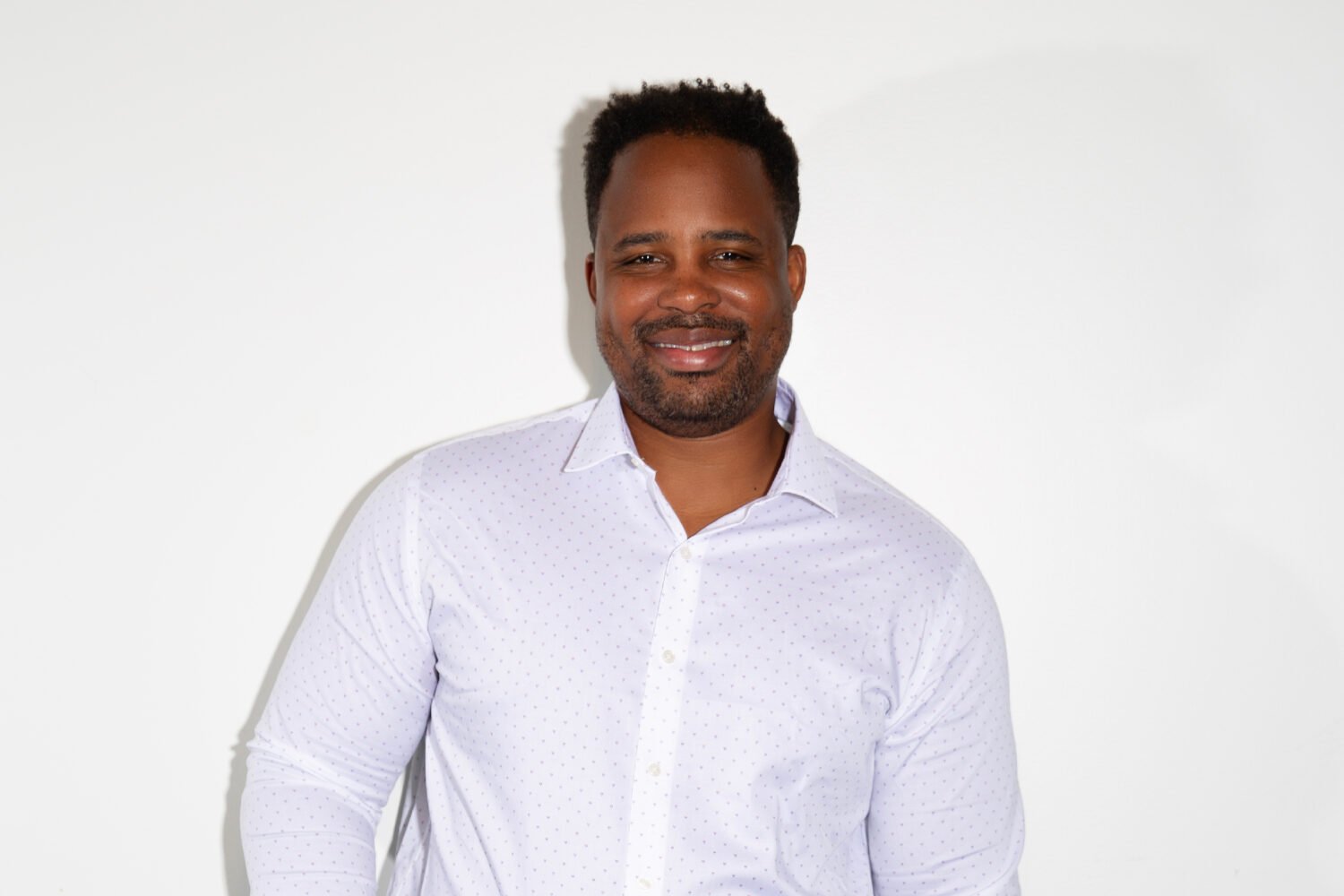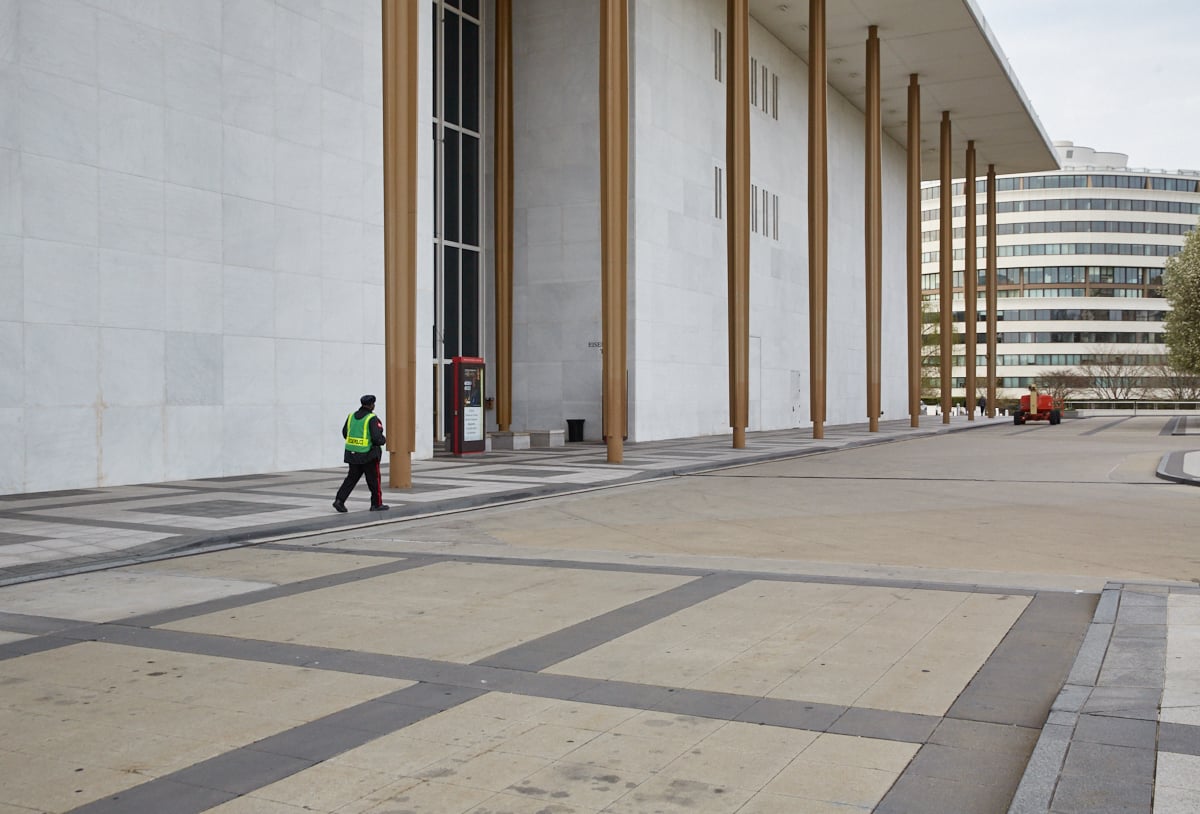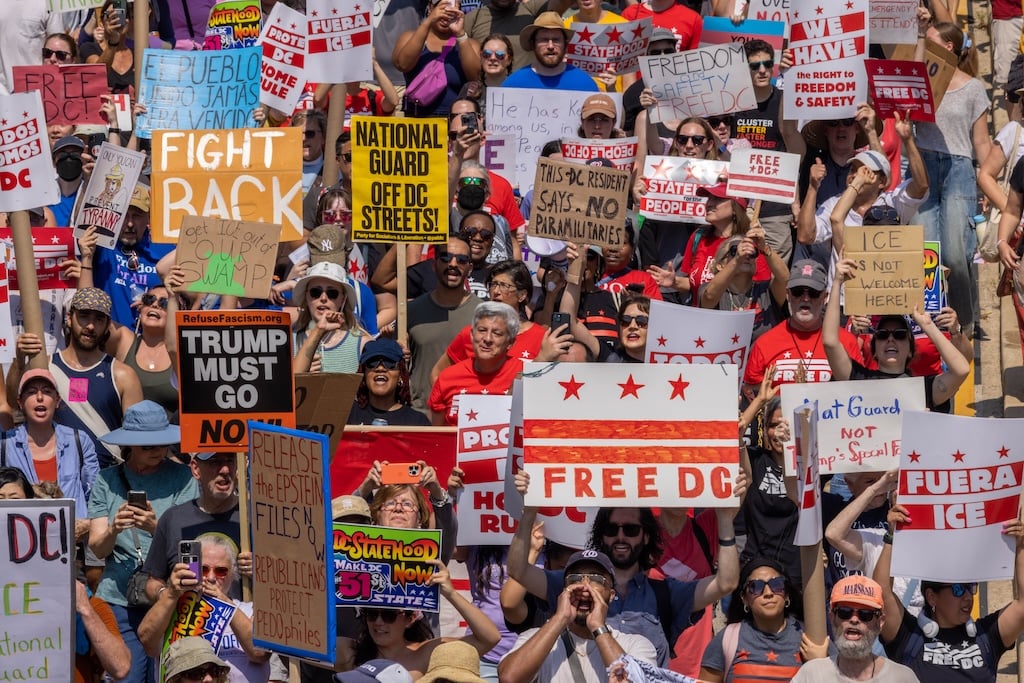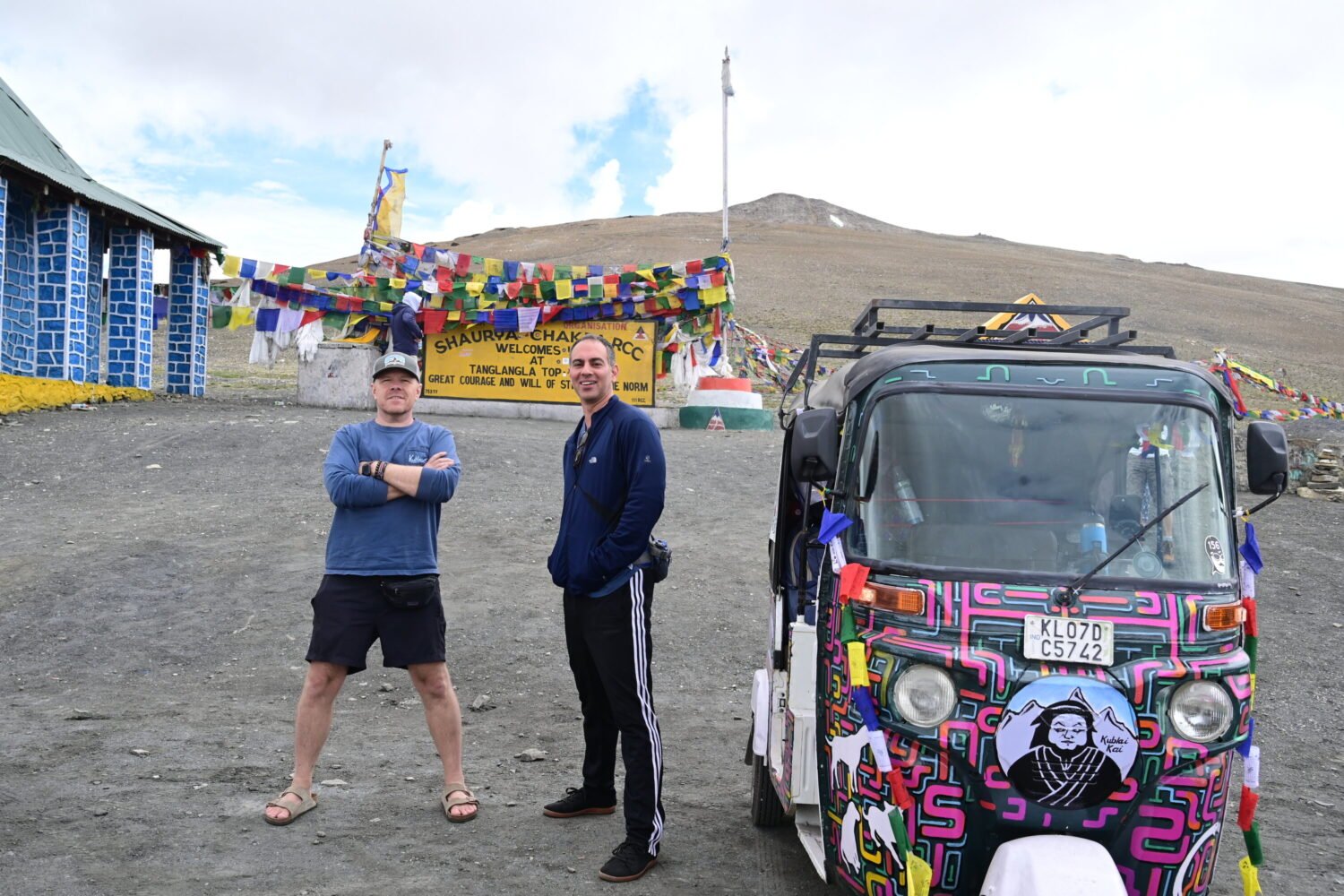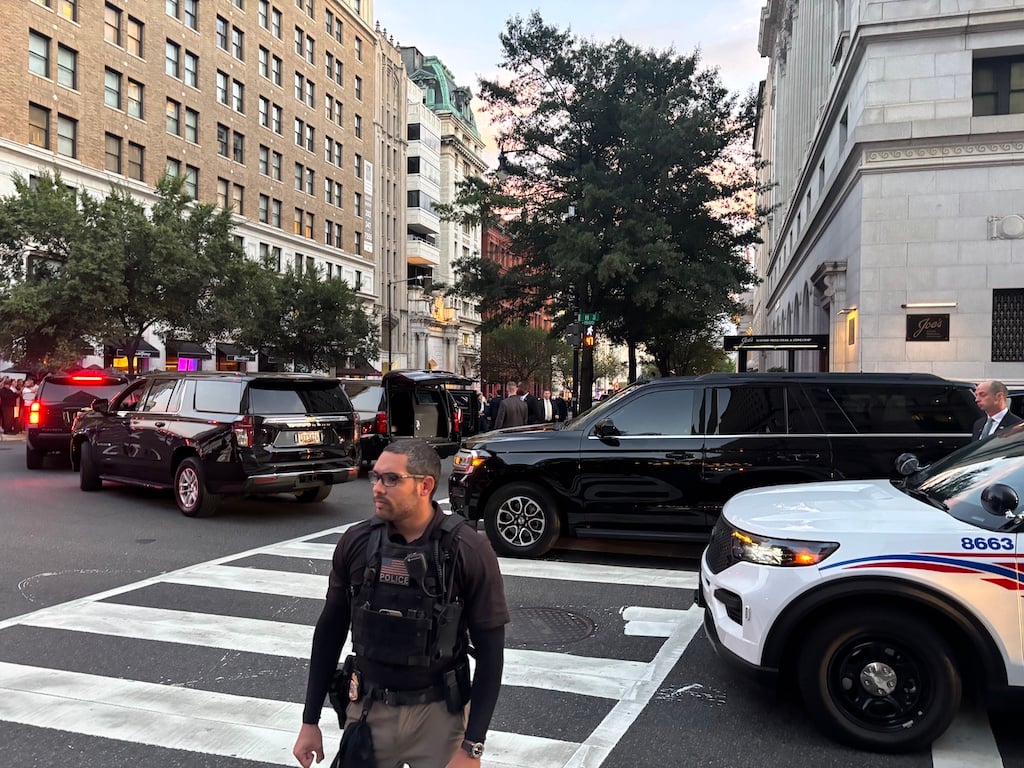Washington was a very different place in 1965. The Beltway had just opened, and Metro was only a proposal. Towns such as Reston and Columbia were being built. There was no Verizon Center, and the Redskins had never won a Super Bowl. The changes caused by the 1968 riots, Watergate, and crack cocaine were on the way.
The Washingtonian published its first issue that October. In our 45th-anniversary issue, we look at how the region has changed, through the lens of the people who made it what it is today. Here are 45 whose contributions—for better or worse—affected where we live and work, where we dine, what we read, which teams we cheer for, what music we listen to, and much more.
Robert E. Simon and James Rouse
In the 1960s, when suburban development was marked by the creation of many cul-de-sacs, Robert Simon and James Rouse challenged the notion of American suburbia. In Northern Virginia, Simon created Reston, a planned community where residents could live, work, eat, and play. In Maryland, Rouse founded Columbia, a city designed to bring together people of all races and economic groups. Besides inspiring dozens of similar towns—from the Kentlands in Gaithersburg to Kingstowne in Fairfax—these two visionary developers changed the way Washingtonians think about growth and community.
Katharine Graham
It was said that an invitation to Kay Graham’s Georgetown home was more coveted than an invitation to a White House state dinner. A shy grande dame, as publisher she guided the Washington Post from a good daily paper to a national heavyweight that rivaled the New York Times, and she grew the Post Company into a media and educational powerhouse. During the Watergate investigation and publication of the Pentagon Papers, she backed her reporters and stood up to the Nixon Administration.
Darwin Stolzenbach and Jackson Graham
If not for these two men, Metro might never have been built. According to historian Zachary Schrag, an extensive network of highways was planned for Washington when John F. Kennedy tapped Stolzenbach, an anti-highway activist, to run the National Capital Transportation Agency. Stolzenbach made rapid transit the focus of the region’s transportation plan, and Congress approved a version of his proposal in 1965. Graham, a retired Army Corps of Engineers general, was Metro’s first manager. He had the experience, skill, and forceful personality to make Stolzenbach’s vision a reality.
Zelda Fichandler
Before Zelda and Tom Fichandler and Edward Mangum started Arena Stage in 1950, the only homegrown live theater in town was inside the Capitol; the National Theatre hosted road companies. As artistic director, Zelda Fichandler built an acclaimed acting company and a reputation for breaking down racial and cultural barriers. Arena was the first regional theater to transfer a production to Broadway and the first theater outside New York to receive a Tony Award. Thanks to Zelda, Washington audiences didn’t have to go to New York to see a really good show.
Harry Weese
Nearly every Washingtonian has seen Weese’s art. The Chicago architect designed Metro’s stations, described by New York Times architecture critic Herbert Muschamp as “some of the most powerful public spaces of our time.” Weese’s vaulted concrete ceilings and lights embedded in the platforms showed that subway stations could be beautiful and functional at once. He also designed the original Arena Stage and helped select Maya Lin’s design for the Vietnam Veterans Memorial.
S. Dillon Ripley
As secretary of the Smithsonian Institution during its golden age—1964 to 1984—Ripley told curators to take valuable musical instruments out of their cases “and let them sing.” A renaissance man with a populist flair, he presided over a period of big growth: He added eight new museums to the Smithsonian empire, tripled the number of visitors, led the organization into the magazine and broadcast worlds, added concerts, and—befitting the kid-like wonderment he brought to the job—installed a carousel on the Mall.
Patrick Hayes
He was Washington’s original Music Man. As founder of the Washington Performing Arts Society, Hayes brought great musicians and dancers from all over the world to perform for local audiences, and he arranged for many of the great artists to present concerts in area schools. An impassioned impresario, the dapper, white-maned Hayes filled area concert halls with joyful sounds.
Thomas Hale Boggs Jr.
When this godfather of K Street partnered with an attorney named James Patton in 1966, he changed the business landscape of Washington. Boggs developed a robust lobbying practice at what was a traditional law firm, pioneering the model that has propelled the lobbying industry into a multibillion-dollar-a-year enterprise. Today K Street is dominated by megafirms—including Patton Boggs, where Boggs is chairman—that offer clients a combination of lobbying and legal expertise. Although his bid to become a Maryland congressman in 1970 was unsuccessful, Boggs has shaped more laws from his downtown DC office than he ever could have as a legislator.
Maya Lin
As a 21-year-old Yale undergraduate in 1980, she entered a competition to design the Vietnam Veterans Memorial. Her simple concept of a black-granite V cut into the earth was the eight-person jury’s unanimous choice from more than 1,400 entries. Though some Vietnam vets called her design a “black ditch of shame” and tried to block it, it’s now regarded as one of the most emotionally powerful memorials ever built.
Edward Bennett Williams
The legendary criminal defender’s intense focus and skill made him the go-to lawyer for a string of famous—often infamous—clients, including mobster Frank Costello, union boss Jimmy Hoffa, Senator Joe McCarthy, and singer Frank Sinatra. Williams elevated the image of criminal defense from seamy and second rate to a practice that today includes some of Washington’s most celebrated attorneys—many of whom work at Williams & Connolly, which he cofounded in 1967. The lawyers there continue to handle the highest-profile clients and much of the highest-stakes work in town. As onetime owner of the Redskins and the Baltimore Orioles, Williams also left his mark on the sports scene.
Catherine Filene Shouse
In 1966, Shouse donated $2 million and 100 acres of her Virginia farm to create Wolf Trap, the first national park devoted to the performing arts. The venue opened in 1971, and the Virginia hillside has been alive with music ever since. The National Park Service agreed to maintain the grounds, and Shouse set up a foundation to pick the talent that would perform and keep the place going and growing. That foundation now funds major arts-education programs for area schoolkids, nurtures young talent with its Wolf Trap Opera Company (mezzo-soprano Denyce Graves is an alum), and offers affordable access to great shows for all Washingtonians.
Walter Washington
The right time, the right place, the right name—Walter Washington had it all. LBJ appointed him as the District’s mayor in 1967. Six months later, the city was in flames after the death of Martin Luther King Jr. Mayor Washington had the contacts, the gravitas, and the street cred to bring business and government together to build the coalition that would rebuild the city. By 1974, when he became DC’s first elected mayor in 104 years, 34 major building projects worth $1.3 billion were in the works for downtown.
J. Carter Brown
As the National Gallery of Art’s longest-serving director, the patrician Brown turned the museum into one of the nation’s premiere art institutions. At the National Gallery’s helm from 1969, when he was 34, to 1992, Brown expanded its collection, used his considerable charm and savvy to increase its public funding, and presided over the opening of the East Building. Brown’s introduction of blockbuster exhibitions, such as King Tut in the 1970s, brought crowds that snaked around the building and helped transform the role of museums all over.
John “Til” Hazel
It’s not a stretch to say Til Hazel did for Northern Virginia what Pierre L’Enfant did for DC. Fairfax County was farms and fields when Hazel entered the development business in the late 1960s; he went on to become the principal developer of Northern Virginia’s burgeoning suburbs. Starting in 1972 with partner Milton Peterson, Hazel developed Burke Center, Franklin Farm, and Fair Lakes. His trademark buzzcut and folksy manner belied a shrewd operator who helped create George Mason University and Alexandria’s top-performing Thomas Jefferson High School.
Oliver T. Carr Jr.
Ollie Carr planted his flag in downtown DC when other developers fled after the 1968 riots burned streets ten blocks from the White House. He pioneered the city’s rebirth by buying and restoring the Mills Building overlooking the White House. He went on to develop International Square and two anchors of Pennsylvania Avenue: a restored Willard Hotel and Metropolitan Square. With his sons in the Carr Company, he developed the city’s West End and more than 11 million square feet of District office space.
Ken Sparks and John Tydings
Since the early 1970s, if something important was getting done in DC or elsewhere in the region, all roads led to Ken Sparks, executive director of the Federal City Council, and John Tydings, president of the Greater Washington Board of Trade. The two always seemed to find a way to help solve problems in the most sensible way—and they did it behind the scenes and without recognition. From recruiting new civic leaders to building the Metro to helping pave the way for the Verizon Center and the revitalization of downtown DC, Sparks and Tydings used their political skills and love of community to make things better for the entire Washington area.
Bob Woodward
The Washington Post reporter and editor will go down in history for his role in uncovering, with Carl Bernstein, the real Watergate story, but his other lasting impact comes from more than a dozen best-selling books—the latest of which, on Barack Obama’s presidency, is out this fall—that offer inside accounts of major moments in history. Woodward’s long track record and relentless reporting have shown that sources and reporters can work together to benefit readers.
Charles “Mac” Mathias Jr.
In 1973, Senator Mac Mathias took a five-day tour of the Chesapeake Bay, traveling at the request of constituents concerned about the area’s natural habitat. He was shocked by what he saw and returned to Washington determined to address the problems facing the bay. Mathias pushed a $27-million Environmental Protection Agency study through Congress and used his sway to make sure the report got attention. He laid the foundation for the Chesapeake Bay Program, a multi-state cleanup effort. Mathias remained a champion of the Chesapeake throughout his nearly three-decade tenure in Congress.
Chuck Brown
In the 1970s, he created go-go, the only style of music native to Washington. Combining jazz, funk, and Latin with call-and-response choruses, go-go captured the spirit of DC. To keep people dancing, Brown never stopped between songs—hence the name “go-go.” Brown’s signature style has since been adopted by younger bands who put their own twist on go-go while staying true to its free-flowing essence. Go-go is still known as the sound of Washington.
Richard Nixon
He may be best remembered for Watergate, but the President who declared war on drugs and welcomed Elvis to the Oval Office also launched the Environmental Protection Agency, the Consumer Product Safety Commission, the Occupational Safety and Health Administration, and other regulatory bodies, increasing the power of government and forcing companies all over the country to have more lawyers and lobbyists here watching out for their interests. Nixon’s surprise opening to China in 1972 resulted in perhaps his most endearing legacy in the nation’s capital: a gift to the United States of the giant pandas Ling-Ling and Hsing-Hsing, the first in a succession of pandas that have become the city’s beloved unofficial mascots.
Vinton Cerf and Robert Kahn
No one man can claim to have invented the Internet—but two can. In 1974, computer scientists Vint Cerf and Bob Kahn laid the foundation for today’s Web by inventing a new way for computers to talk to one another. The precursor to the Internet had already been set up by researchers at the Defense Department’s Advanced Research Projects Agency, but Cerf and Kahn took it to the next level by creating the TCP/IP protocol. In doing so, they helped set the stage for Northern Virginia’s technology boom in the 1990s. Several billionaires—and ex-billionaires—owe their fortunes to these two pioneers.
Roger L. Stevens
“Whatever I get involved in,” Roger Stevens once said, “happens.” For the arts executive, producer, and real-estate broker who shaped Washington’s theater-and-arts landscape, that would include the Kennedy Center, which he helped build and guide as founding chairman; the National Endowment for the Arts, which he shepherded through Congress as a special assistant to President Lyndon Johnson and then chaired; the National Theatre, which he saved from collapse in 1974; and countless theatrical shows he produced in Washington, on Broadway, and around the world.
Mary Day
For much of the last half century, ballet in Washington was described with two words: Mary Day. One of the nation’s acclaimed ballet teachers, Day started the Washington School of Ballet in 1944 and, in 1976, the Washington Ballet, now one of the country’s top regional companies. As artistic director until 1999, she introduced audiences to classical and contemporary works, and her production of The Nutcracker became an annual tradition. Students such as Kevin McKenzie, now artistic director of the American Ballet Theatre, and former ABT principal Amanda McKerrow are a testament to her influence.
Edwin Feulner
As head of the Heritage Foundation since 1977, Ed Feulner all but invented the modern Washington think tank. He marketed his ideology and his think tank’s products smartly to policymakers, shaped a generation of Reagan thinkers, and educated thousands of future politicos, government staff, and leaders through Heritage’s tech-savvy channels. The organization he took over just after Jimmy Carter’s election, with only nine employees, would be unrecognizable to the 220 people who now work out of its Capitol Hill headquarters—so large that it has its own dorm for interns.
Jean-Louis Palladin
Washington was no stranger to French food, but it had never seen anything like this curly-mopped genius, who commandeered the kitchen at the Watergate in 1979 and turned haute cuisine into playful, exuberant art. Serious but never pretentious, passionate in his belief that American ingredients were as good as those from his native France, he laid the foundation for dining in Washington for the next three decades, influencing Michel Richard, José Andrés, and scores of others. Chefs today speak the words “local” and “seasonal” with almost religious fervor. Jean-Louis was talking that talk and walking that walk 30 years ago.
Jack Kent Cooke
A titan of business and sports, Cooke opened his wallet to build the Washington Redskins into a franchise that went on to win three Super Bowls under coach Joe Gibbs. Cooke became what passes for royalty in Washington with his estate in Middleburg, his mansion in DC’s Massachusetts Avenue Heights, and his fiery young fourth wife, Marlene. A brash curmudgeon, Cooke ruled his sports-and-real-estate empire until his death in 1997. His foundation now awards scholarships to students across the country.
Marion Barry
He dominated and polarized DC politics from the moment he arrived in 1965. For blacks, he pried open doors of a DC government that had barred them for decades. To many whites, he disgraced the city by creating a dysfunctional government, flaunting his drug-addicted lifestyle, and playing the race card. His arrest on cocaine charges in 1990 confirmed their attitudes; blacks reelected him mayor in 1994, reaffirming their love. At 74, he’s still here, representing Ward 8 on the DC Council.
Diana McLellan
Diana McLellan didn’t invent Washington gossip, but she polished it, perfected it, and got it in print in time for cocktail hour. Her delicious Ear column in the Washington Star playfully punctured the pompous and revealed the steamy side of Washington’s social set. She relished the ridiculous—exposing gardeners at the Department of Transportation who faithfully tended fake trees in front of the headquarters. After the Star folded, Ben Bradlee enticed McLellan to the Washington Post, but the paper’s lawyers and editors cramped her style. McLellan also worked at The Washingtonian.
Mario Morino
Best known now for his involvement in Venture Philanthropy Partners—which applies venture-capital-like practices to the world of nonprofits—Morino was one of the founders of the area’s tech community. Beginning in his basement, Morino Associates grew to become one of the region’s technology powerhouses in the 1980s—when it was sold in 1995, it was the largest software sale in history—and his legendary gatherings during the dot-com boom helped knit together the disparate local technology worlds. Now his Morino Institute is helping to build the next generation of “netpreneurs.”
Ronald Reagan
President Reagan is remembered for many things, but the Gipper’s chief legacy to Washington was born of the statement in his first inaugural address that “government is not the solution to our problem; government is the problem.” On that premise, he set about contracting out government work to private companies, many of them in Washington. As federal spending skyrocketed, the region saw a boom among “Beltway bandits”—thousands upon thousands of companies providing everything from data processing to top-secret intelligence work. “Contracting out” has made Washington relatively recession-proof and one of the world’s wealthiest metropolitan areas.
Brian Lamb
The introduction of cameras into the House and Senate chambers, spearheaded by Lamb as founder of C-SPAN, ushered in an era of accessible governance, bringing the lawmaking process into living rooms and forever altering floor debates. A generation later, he’s helping to move 160,000 hours of C-SPAN’s archived programming online into searchable databases. The unassuming Lamb offered a valuable tip for today’s opinionated TV anchors during a rare interview of his own in 2008: “I don’t pretend I have the answers. That’s why I’m here asking the questions.”
Rayful Edmond III
Rayful Edmond battled and murdered his way to becoming DC’s cocaine king in the 1980s. His reign devastated neighborhoods, led to the addiction of thousands, and helped drive the murder rate to 479 a year. The capital’s drug trade was disorganized when Edmond started selling in the Trinidad neighborhood. By 1988, he was buying in bulk from Colombians, and his enforcers were killing the competition. Edmond drove his white Jaguar with gold hubcaps around the ’hood on Thanksgiving, dropping off free turkeys. Busted in 1989, he’s serving a mandatory life term.
Maria S. Gomez
Twenty-two years ago, Gomez set out to provide prenatal care for the Latino women of Washington. Recognizing that a charity needs to go where its beneficiaries are, she opened her bilingual clinic in DC’s Adams Morgan. Today that clinic has grown into Mary’s Center, a critical piece of the region’s health-care system. With an annual budget of $14 million, it offers medical, social, and vocational services for 10,000 clients a year—many of whom are immigrants.
John Thompson and Lefty Driesell
Under John Thompson, Georgetown won an NCAA title and became an NBA star factory, producing Allen Iverson and Patrick Ewing, among other top talent. Maryland coach Lefty Driesell started Midnight Madness, now almost a national holiday, and took the Terps from ACC also-rans to perennial contenders. The programs Thompson and Driesell built consistently rank among the best in the nation, and fans show up to cheer. Both teams often play in sold-out arenas, and their fan bases are two of the fiercest outside Tobacco Road.
Douglas Jemal
Developer Doug Jemal used his cash to buy and preserve community gems all over DC. The Avalon Theatre in the city’s Chevy Chase neighborhood was shuttered before he restored it and turned it over to a local nonprofit. He joined with Abe Pollin and Shelton Zuckerman to restore Sixth & I Historic Synagogue in Chinatown. He preserved the old Woodies department-store building downtown, renovated and rented out the storefronts along Seventh Street in Gallery Place, and promoted retail over office buildings across the region, where he’s now among the largest property owners.
George Michael
He showed Washingtonians there was more than politics and crime in local TV news: He made us see ourselves as a town of hot sports teams and glamorous athletes, especially if they played for the Redskins. Using video highlights on his Sports Machine show on Channel 4 from 1980 to 2007, Michael could transform a day of athletic events into a circus, with him playing the role of P.T. Barnum. He portrayed sports as pure entertainment and paved the way for ESPN’s success.
Ian MacKaye
This rocker helped make DC a hot spot for punk music starting in the ’80s. MacKaye’s Dischord Records helped launch the careers of local bands such as Q and Not U and Jawbox. His own bands, Minor Threat and Fugazi, defined DC hardcore punk for two decades. MacKaye’s shows were always cheap and open to all ages. A rarity at the time he started, all-ages shows are now the norm at the 9:30 Club and the Black Cat. MacKaye still does benefits at places such as St. Stephen’s church in DC’s Columbia Heights and local arts spaces. With his sister Amanda, he’s also the force behind the city’s popular Fort Reno concert series.
Cathy Hughes
Working out of a storefront at Fourth and H streets, Northeast, Hughes used tiny WOL-AM to give DC’s African-Americans an identity and a voice. In 1986, she led a recall of the Washington Post—dumping copies at the paper’s headquarters—because of the Post Magazine’s portrayal of blacks as thugs. The paper agreed to hire more black reporters, and publisher Donald Graham periodically appeared on her show. Hughes, now Radio One’s chairperson, went on to buy WKYS-FM and 52 other radio stations nationwide.
Julie L. Rogers
As Meyer Foundation president, Rogers does more than hand out grant money. A master matchmaker, she creates coalitions of nonprofits with symbiotic missions and has done a lot to nurture emerging talent in the nonprofit sector. As founding chair of Washington Grantmakers, she has fostered cooperation on the funding side, too. Her pioneering efforts in professionalizing philanthropy have helped nonprofits and funders alike in a time of diminished resources. Thanks to her, many community groups are doing better at doing good.
Michael Kahn
With Kahn at the helm, Shakespeare Theatre Company is one of the hottest tickets in town. The director is known for dazzling special effects, unconventional casting, and luring actors such as Patrick Stewart, Elizabeth Ashley, and Marsha Mason to Washington. Kahn has set Love’s Labor’s Lost in a hippie commune and cast a guy to play Juliet in Romeo and Juliet. But the classic words still ring as true as the clashing swords. And the audiences just keep growing.
José Andrés
Most Washington diners regard the irrepressible Spaniard as the chef/entrepreneur who popularized the concept of “small plates”—tapas from Spain, antojitos from Mexico, mezze from Turkey and Lebanon. In the past two decades, Andrés has almost single-handedly redrawn the lines between fine and casual dining, paving the way for a new kind of restaurant in this city and remaking the scene in his own image: serious but sensual, precise but playful.
Abe Pollin
DC’s Gallery Place was a sketchy part of downtown before Pollin risked $220 million to build a classy arena for his basketball and hockey teams on Seventh Street in 1997. But while he deserves credit for rescuing the neighborhood, Pollin prided himself more on what he gave away. Raised in Washington, he made his money developing apartments and offices and then gave millions back to Washingtonians through affordable housing, Boys & Girls Clubs, and medical research.
Alice M. Rivlin
She helped rescue DC from bankruptcy in 1998. The city was $700 million in debt when Congress took over its finances and President Clinton appointed Rivlin to sort out the mess. She skillfully chaired the Financial Responsibility and Management Assistance Authority and gave DC credibility with the feds. She had been the first director of the Congressional Budget Office and later director of the Office of Management and Budget. Rivlin now directs the Brookings Institution’s Greater Washington Research Project, which studies the region’s finances and demographics.
Ted Lerner
Ted Lerner paid $450 million to buy the Washington Nationals baseball team in 2006, vowed to keep it in his family and in DC, and has started to invest in young players who could create a successful franchise. Born, raised, and schooled in Washington, Lerner also gave us our first regional shopping malls. He built a real-estate empire that began in downtown DC, expanded to White Flint and Tysons Corner, and now extends to Dulles Town Center.
This article first appeared in the October 2010 issue of The Washingtonian.

